Back to customer center
Danfoss: A Global Beacon of Innovation, Leading Digitalization Worldwide
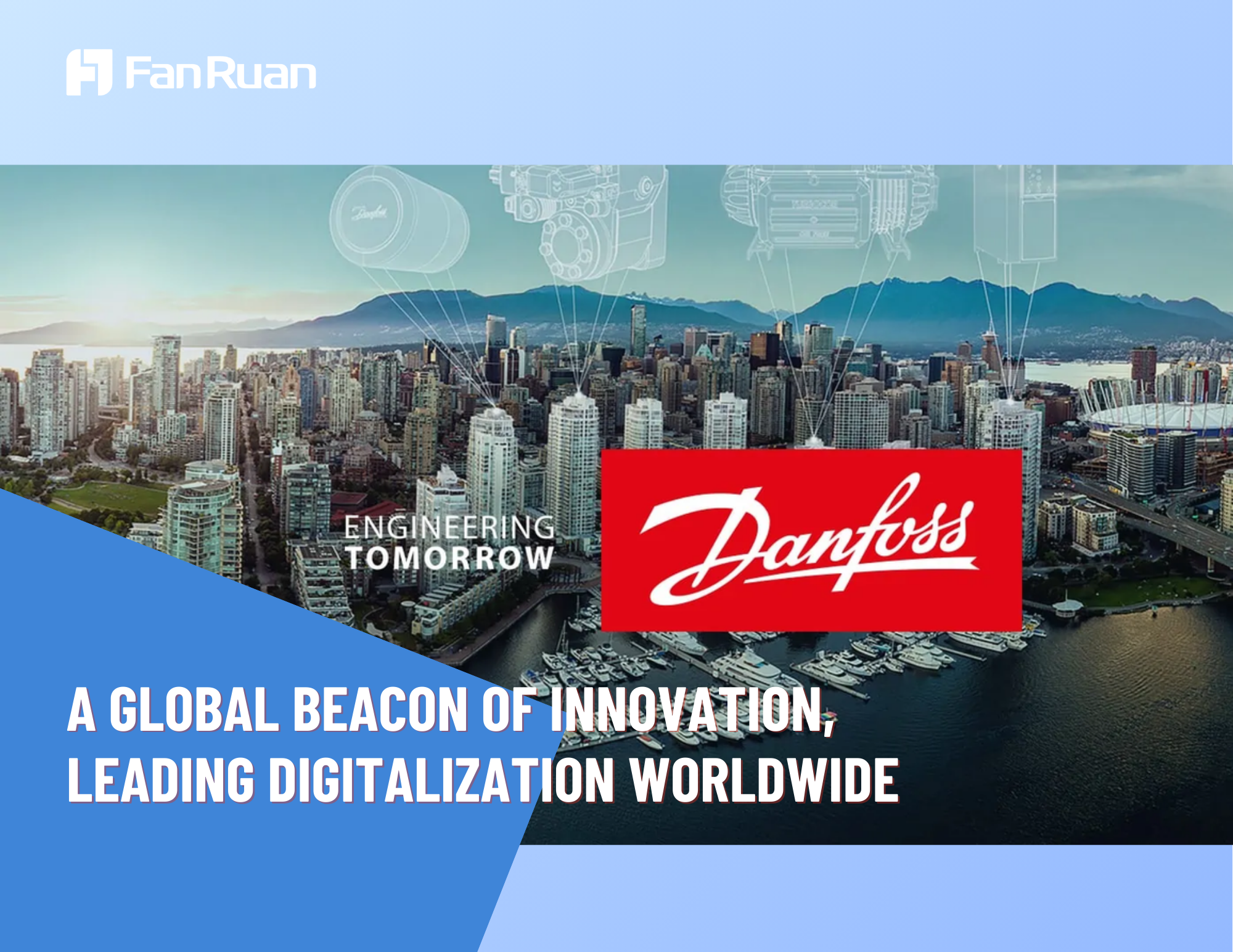
Data refreshes every 6 seconds
Boosting efficiency by 2.8%
Improving OEE by 3%
Leveraging a fully digital traceability system along with smart sensors, visual inspection, and automated monitoring tools, the company successfully enhanced its quality control system, increasing labor productivity by 30% and reducing customer complaint rates by 57% within two years.
Wang ChunGuang
| Danfoss
In today's world, Danfoss is closely associated with countless households, commercial equipment, industrial applications, and public facilities. Since its founding in 1933 by Mads Clausen in Nordborg, Denmark, Danfoss has grown over 90 years into one of Denmark’s largest multinational industrial groups. As a global leader in energy efficiency and environmental solutions, Danfoss operates five business divisions: Cooling and Air Conditioning Controls, Commercial Compressors, Residential Heating and Air Conditioning, District Energy, and Power Electronics. These divisions provide advanced technologies and solutions across residential and commercial heating, cooling, refrigeration, and industrial automation, playing a vital role in enhancing modern comfort while advancing sustainability and clean energy. Notably, Shanghai Tower, China’s tallest building, has adopted Danfoss frequency converters and balancing valves, reducing its heating and cooling system energy consumption by approximately 20–40%.
Since entering the Chinese market in the mid-1990s, Danfoss has consistently positioned China as its "second home market," steadily expanding its investment and operations. Today, China stands as Danfoss’s second-largest market globally by revenue, ranks second in employee headcount, and serves as the company’s largest sourcing base worldwide. As a global leader in refrigeration and air conditioning solutions, Danfoss established its first wholly owned manufacturing facility in China—Danfoss (Tianjin) Co., Ltd.—located in the Wuqing Development Zone, Tianjin. Since its founding in 1996, the facility has grown to encompass two campuses covering 62,000 square meters. It is now the largest Danfoss production site outside of Denmark and has been recognized as a benchmark factory for smart manufacturing.
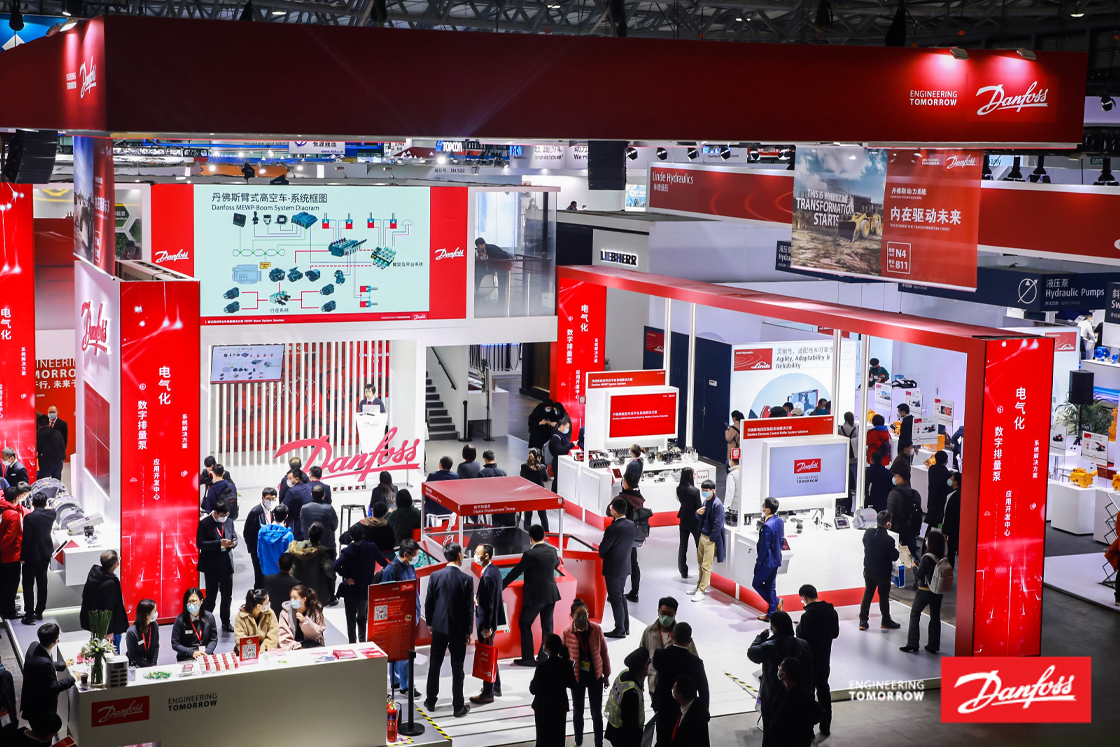
A lighthouse must let its light be seen
A "Lighthouse Factory" refers to a leading enterprise recognized globally for its outstanding achievements in integrating cutting-edge technologies of the Fourth Industrial Revolution. In January 2019, Danfoss was one of the 16 selected as Lighthouse Factories among an initial list of 1,000 manufacturers worldwide. Its F-Factory Machining Workshop specializes in the production of refrigeration compressors, consistently prioritizing safety and quality while achieving over 10% annual improvements in production efficiency and reducing scrap rates by more than 5% each year.
The workshop began its digital transformation journey as early as 2011, developing over ten digital systems, including an SPC system, an automated measurement data upload system, and a pressure monitoring system. However, these systems were developed independently, lacked interoperability, and failed to achieve true integration—resulting in isolated data silos. Additionally, the rigid user interfaces meant that even minor updates required vendor intervention, leading to high ongoing maintenance costs.
The machining workshop is characterized by a large number of machines, a wide variety of product models, and small production batches — a classic example of a discrete manufacturing mode. As a result, recording and tracking each workpiece has always been an important yet labor-intensive task. In the past, the workshop generated around 10,000 manual records daily, creating significant pressure for data storage and retrieval.
To address this pain point, the workshop launched an information management system project in 2020. After evaluating various solutions against on-site production needs, the team ultimately chose a combination of handheld PDA data entry devices and FineReport for data visualization and reporting.
On one hand, the handheld PDAs are compact and portable, allowing flexible deployment across equipment. Workers can collect data by scanning QR codes on workpieces, making it highly suitable for discrete manufacturing environments. On the other hand, FineReport offers rapid deployment, powerful data entry and analysis capabilities, eye-catching large-screen display features, and a rich variety of visual charts, including 3D visualizations. After implementing the solution, the workshop’s operations dashboard was completed in just about two weeks, and the main KPI tracking and analysis reports were developed within a month.
Following the workshop’s three-phase digitalization roadmap, information and data-driven management have now been fully realized — turning data into true productivity. This solution not only addresses the challenges of managing numerous machines, diverse product models, and small production runs but also makes the entire production process more transparent and visualized. Additionally, the system enables real-time monitoring of equipment status and production data across both mobile and PC platforms, allowing managers to promptly grasp production dynamics and make necessary adjustments.
Real-Time Monitoring of Key Workshop KPIs
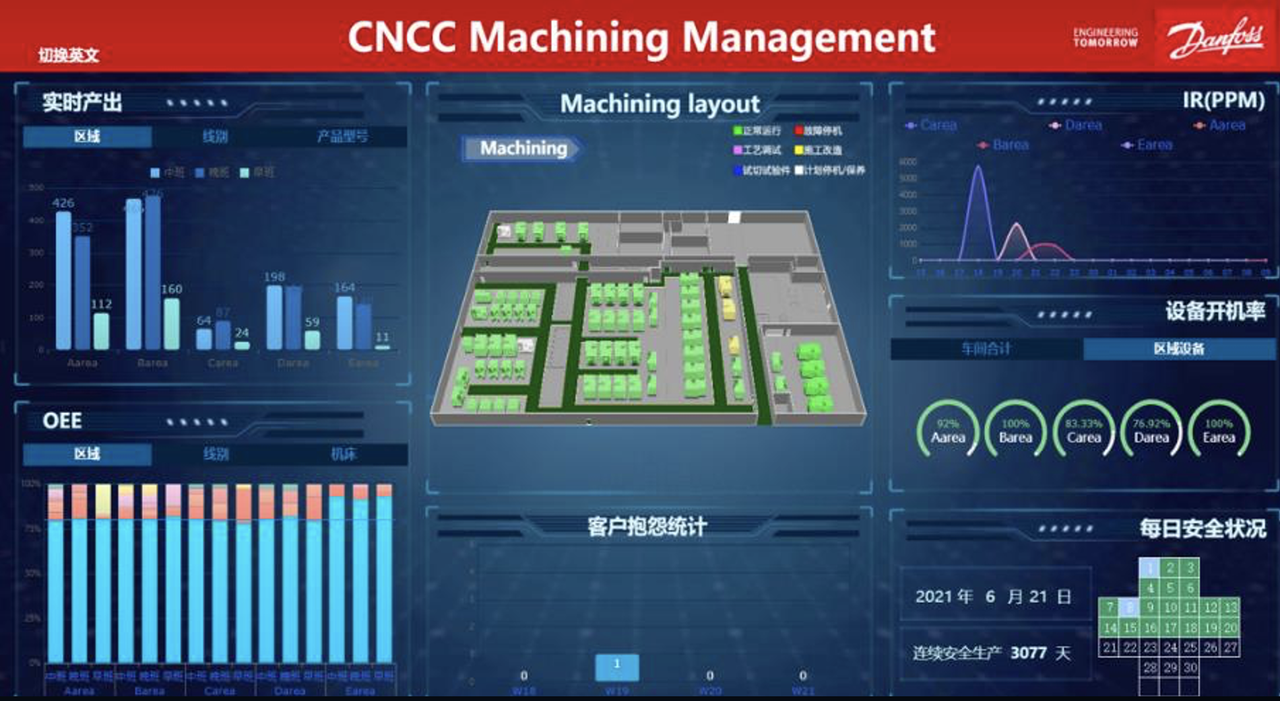
s a result, having a real-time KPI dashboard became the workshop’s most urgent need. Using FineReport, KPIs — including output, OEE, scrap rate, equipment status, customer complaints, and safety indicators — were centralized and displayed in one dashboard. Production data is refreshed on the dashboard every six seconds, enabling real-time workshop monitoring where KPIs reflect the current shift’s actual performance. Whenever deviations in KPIs occur, support teams such as process engineering and maintenance can immediately intervene on-site, greatly improving the responsiveness and efficiency of issue resolution. This initiative directly led to a 2.8% increase in operational efficiency.
Machining Paperless Initiative: Advancing Low-Carbon Operations
Since 2016, despite a 51% increase in sales, the Danfoss Wuqing Campus has reduced its total energy consumption by 3%, improved energy efficiency by 56%, lowered energy intensity by 36%, and cut carbon emissions intensity by 29%, achieving an annual reduction of 18,000 tons of CO₂ emissions. As part of the company’s steady pursuit of green, low-carbon development, the machining workshop has actively promoted paperless operations using FineReport.
Before the paperless initiative, operational SOPs, continuous improvement (CI) documents, and machine inspection records were physically posted on machine guards. Over time, these paper documents became susceptible to dirt, damage, and delays in updates. In addition, all production records and CMM (Coordinate Measuring Machine) reports required printing, resulting in significant paper consumption and associated costs.
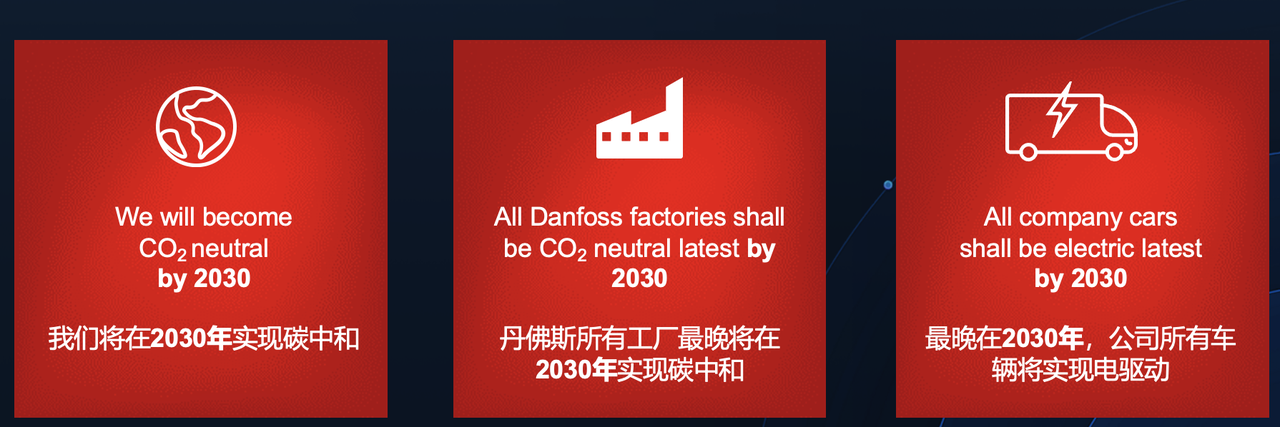
Today, processes such as document distribution, production plan imports into the system, CR records, paperless CMM reports, hourly tracking, and machine/tool inspection checkpoints have all been integrated into streamlined, digital management workflows.
Aside from safety signage, no additional paper documents are posted on the surfaces of the machines. All types of documents are now directly distributed to workstation display screens, with centralized updates and management handled via the backend system.
Production records and CMM reports are displayed electronically on workstation screens or tablets (PADs), eliminating the need for printing. This initiative saves approximately 30 boxes of paper per month and reduces annual costs related to paper and printer maintenance by about RMB 35,000.
Production and Quality Analysis
Production and quality analysis are indispensable parts of our manufacturing process. By enabling multi-dimensional, real-time queries and analysis, we gain a comprehensive understanding of workshop productivity and product quality, providing strong data support for continuous improvement. Each year, the workshop sees significant efficiency gains and noticeable reductions in scrap rates through real-time monitoring on large display dashboards, delivering substantial benefits to production.
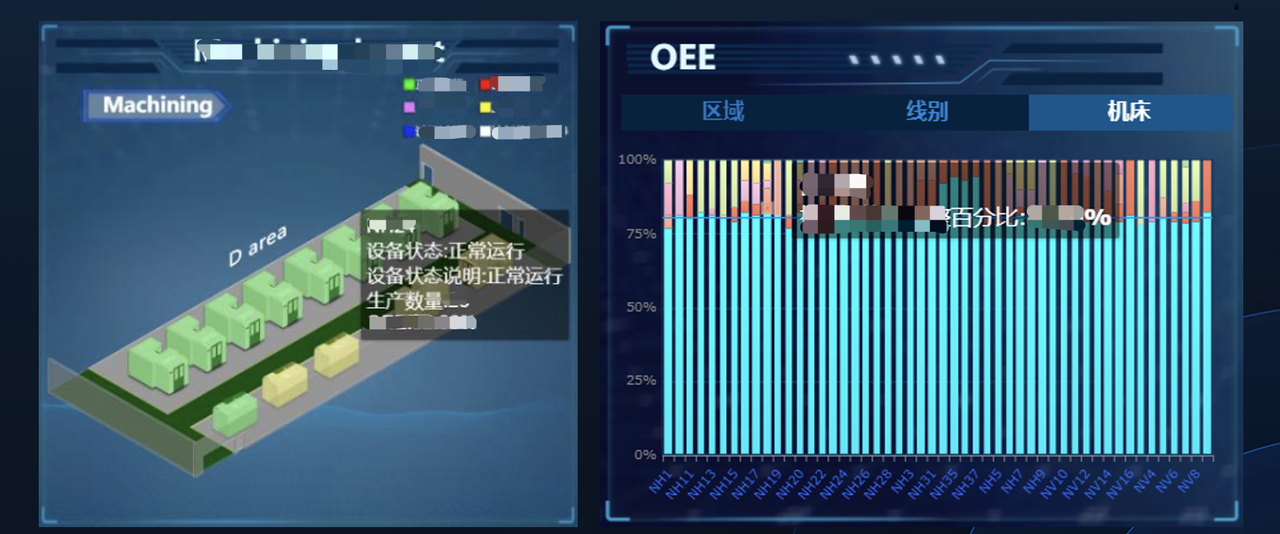
67 years ago, the compressor for China's first domestically produced refrigerator, the "Snowflake," came from Danfoss. 27 years ago, Danfoss established its commercial compressor plant in Wuqing, Tianjin—its first factory in China, marking the beginning of its deep-rooted presence in the Chinese market. Today, Danfoss continues to shift more of its high-end and core business units and production lines to Wuqing. As a "Lighthouse Factory" with a machining and manufacturing focus, the facility has developed six analytical modules and over 100 analytical reports since October 2020. With new ideas realized rapidly each month through FineReport, the plant has saved the equivalent of three full-time employees, increased OEE by more than 3%, and improved overall efficiency by approximately 6% in just a few months.


